China Mint

 Asia's premier mint that produces the popular Chinese Panda coins
Asia's premier mint that produces the popular Chinese Panda coins
The People's Bank of China is the country's central bank. It is in charge of currency production and distribution in China. The production is in the hands of the China Banknote Printing and Minting Corporation (CBPM). Its mints produce China's circulating coins, commemorative coins, gold and silver coins and are active in the processing of gold and silver.
China's most popular precious metal coin is the Chinese Gold Panda that is being produced since 1982. These coins show a different panda image on their reverse side each year which makes them highly collectible. The Chinese Panda coins were in fact the world's first gold bullion coins with an annually changing design. The Chinese Panda coins are also minted out of silver each year. Even a platinum and palladium version existed in years past. The Chinese Panda coins are classified as "Chinese Modern Precious Metal Commemorative Coins" (CMPMCC) for which the China Gold Coin Incorporation is responsible since 1987 under license of the People’s Bank of China. The China Gold Coin Incorporation has a number of subsidiary/branch companies that mostly deal with the domestic and international distribution of the precious metal coins.
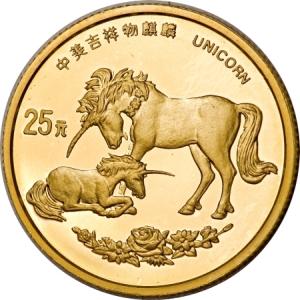

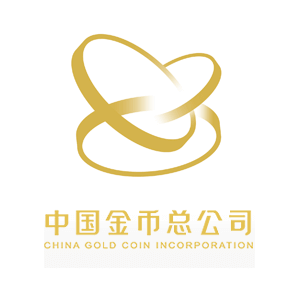
Minting Facilities
The China Banknote Printing and Minting Corporation (CBPM) operates mints in Shanghai (17 Guangfu West Road, Putuo District), Shenyang (138 Dadong Road, Dadong District), Nanjing (Dongshanzhen, Jiangning District) and a gold and silver refinery in Sichuan. The China Gold Coin Incorporation runs a modern mint in Shenzhen (licensed as Shenzhen Guobao Mint Ltd) that produces all the Chinese Gold Panda coins since 2005. Until then they were produced by the mints in Shanghai and Shenyang. The coins don't have mint marks.
History
When the Shenyang Mint was founded in 1896 as the “Fengtian Machinery Bureau”, China was still under the imperial rule of the Qing government. The Shanghai Mint was established in 1920 and the Nanjing Mint in 1985. Several branch mints existed during the Sino-Japanese war and the revolutionary war that followed it. All these branches were closed afterwards.
The People’s Bank of China issued its first gold coin in 1979 to mark the 30th anniversary of the founding of the People’s Republic of China. Since then, China has issued more than 1,700 different precious metal coins. The Chinese Gold Panda coin series started in 1982 with the available denominations of 1 oz, 1/2 oz, 1/4 oz and 1/10 oz. The 1/20 oz coin followed in 1983. This small size (and the 1 gram coin that was only issued in 1991) was a world's first for bullion coins. Larger coin sizes such as 5 oz, 12 oz and 1 kg were minted as well in certain years. The Chinese Gold Panda coins also were the world's first gold bullion coins with annual design changes on their reverse side (with the exception of 2001/2002 when the design didn't change). The Chinese Panda coins are minted out of silver as well since 1983 and even a platinum and palladium version of them was minted in certain years in the past. Chinese Lunar coins in gold and silver follow the panda coins in popularity. Furthermore, Chinese Unicorn coins were minted in gold, silver and platinum from 1994 to 1997 and are still popular among collectors. However, both the Lunar as well as the Unicorn coins are fairly difficult to obtain outside of China since few precious metal dealers sell them these days.
The China Banknote Printing and Minting Corporation (CBPM) created the designs on the obverse and reverse of the Chinese Gold Panda coins between 1982 and 1986. In 1987, the China Gold Coin Incorporation took over responsibility for the design, manufacturing and distribution of the popular coins.
The China Mint's Gold Bullion Coins
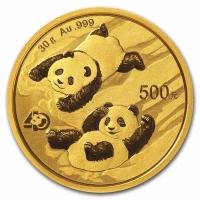
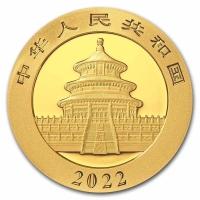
Chinese Gold Pandas
The China Gold Coin Incorporation started with the production of Chinese Gold Pandas in 1982. The 99.9% pure gold coins are available in a wide variety of sizes between 1 gram and 1 kg. Popular with both collectors and investors, the coins display an annually changing image of a Giant Panda on their reverse side. Since 2016, the Chinese Gold Panda coins are denominated according to the metric system. The larger sizes of the coins are only available as proofs whereas the 'regular' sizes are issued with a brilliant uncirculated proof-like finish. Annual mintage numbers of the coins were quite low at first but have increased sharply since 2006. Various special commemorative editions of the coins exist as well.
The Chinese Gold Panda page gives more information about the coins and allows you to compare current prices.
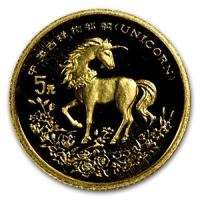
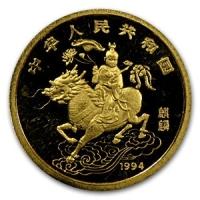
Chinese Gold Unicorns
The China Gold Coin Incorporation minted Unicorn coins out of 99.9% pure gold between 1994 and 1997 in the denominations of 1/20 oz (5 Yuan face value), 1/10 oz (10 Yuan), 1/4 oz (25 Yuan), 1/2 oz (50 Yuan), 1 oz (100 Yuan), 5 oz (500 Yuan) and 1 kg (2,000 Yuan). All of these denominations were minted in 1994 and 1996. In 1995, the 1 kg gold coin was not minted. Only 1/10 oz Unicorn gold coins were minted in 1997. All Chinese Gold Unicorns display images of two mythical beasts, a Unicorn on the obverse and a Chinese kirin on the reverse. Only the 1 kg coin from 1994 is a bit different in that it shows the kirin on the obverse and a Chinese building on the reverse. Additionally, there were bimetallic Unicorn coins (1/4 oz inner gold core + 1/8 oz silver outer ring; face value of 25 Yuan) issued in 1994 and 1995.
Read our blog article for more information about these coins.
Other Precious Metal Bullion Coins


Chinese Silver Pandas
The first Chinese Silver Panda coins were already minted in 1983, but they were only 90% pure and only available with a proof finish. The China Gold Coin Incorporation produces the coins in their current purity of 99.9% since 1989. The brilliant uncirculated 'bullion' version is currently only being offered in the denomination of 30 gram (1 oz until 2015). Proof coins exist in other sizes as well. Chinese Silver Pandas mostly bear the same design as the Chinese Gold Pandas that were issued the same year but there are some exceptions. There exist many special versions of the coins as well, for example gilded and colored coins as well as coins with special privy marks.
The Chinese Silver Panda page gives more information about the coins and allows you to compare current prices.
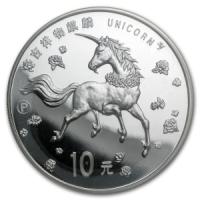
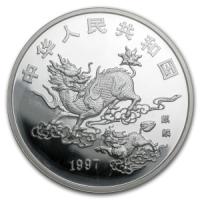
Chinese Silver Unicorns
The China Gold Coin Incorporation minted 99.9% pure Unicorn silver coins between 1994 and 1997 in the denominations of 20 oz (150 Yuan face value), 12 oz (100 Yuan), 5 oz (50 Yuan), 1 oz (10 Yuan) and 20 gram (5 Yuan). Only the 1 oz silver coins were minted in all four years. The 5 oz and 20 oz coins were minted the first three years, the 12 oz silver coins only in 1994 and 1995 and the 20 gram silver coins only in 1996 and 1997. All Chinese Silver Unicorns display images of two mythical beasts, a Unicorn on the obverse and a Chinese kirin on the reverse. Additionally, there were bimetallic Unicorn coins (1/4 oz inner gold core + 1/8 oz silver outer ring; face value of 25 Yuan) issued in 1994 and 1995.
Read our blog article for more information about these coins.
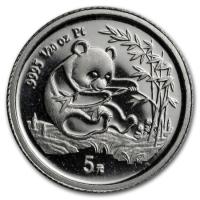
Chinese Platinum Pandas
Chinese Platinum Panda coins with a fineness of 99.95% were only released by the China Gold Coin Incorporation from 1987 - 1990, 1993 - 1997 and 2002 - 2005 in the denominations of 1 oz (100 Yuan face value), 1/2 oz (50 Yuan), 1/4 oz (25 Yuan), 1/10 oz (10 Yuan, 100 Yuan in 2002 and 2005) and 1/20 oz (5 Yuan, 50 Yuan in 2003 and 2004). The 1 oz Chinese Platinum Pandas were minted between 1987 and 1990. Those coins bear the same design as the gold coins of that year. The 1/2 oz and 1/4 oz coins were only minted in 1990 and both of them displayed a unique panda design. The 1/10 oz coin was minted in 1990 (with unique panda design), 1993 - 1997, 2002 and 2005. Finally, the 1/20 oz platinum coins were minted between 1993 and 1997 and in 2003 and 2004.
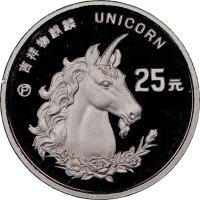
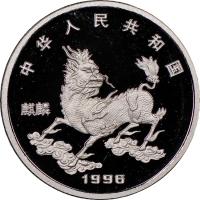
Chinese Platinum Unicorn
The China Gold Coin Incorporation minted the 99.9% fine Chinese Platinum Unicorn coins between 1995 and 1997 in the denominations of 1/20 oz (5 Yuan face value), 1/4 oz (25 Yuan), 1/2 oz (50 Yuan) and 1 oz (100 Yuan). Only the 1 oz version was minted in more than one year (1996 and 1997). The 1/2 oz Platinum Unicorns were only minted in 1995 and the 1/4 oz and 1/20 oz coins only in 1996. All the platinum coin issues display images of two mythical beasts, a Unicorn on the obverse and a Chinese kirin on the reverse.
Read our blog article for more information about these coins.
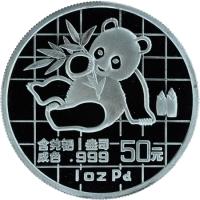
Chinese Palladium Pandas
In 1989, the 99.9% fine Chinese Palladium Pandas made their debut as a coin (commemorative proof Palladium Panda medals had been issued in 1988). A total of 3,000 proof 1 oz Chinese Palladium Panda coins was minted that year by the China Gold Coin Incorporation. The nominal face value of each of these coins was 50 Yuan.
The next Palladium Pandas came out in 2004. A total of 8,000 proof coins of the 1/2 oz denomination (100 Yuan face value) was minted that year. The same number of proof coins of the same denomination was minted again the following year 2005.
All three different issues of the Chinese Palladium Panda bear the same panda design that was also used on that year's gold version of the coins.